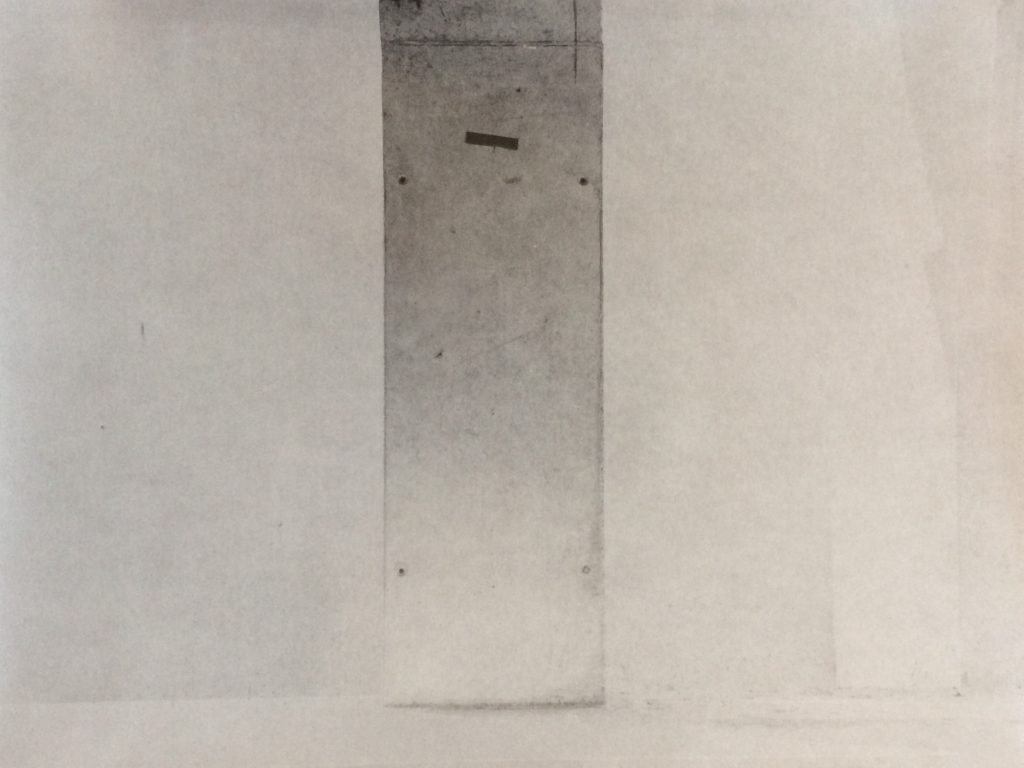Frame image. Choose corresponding lens. Attach lens to front standard. View image on ground glass under dark cloth. Adjust front and/or rear standards with rise/fall, tilt, and/or shift. Focus on ground glass with loupe. Lock rear and front standards. Take light meter reading. Close shutter. Set shutter speed and aperture. Cock shutter. Insert film holder. Remove dark slide. Take photo with cable release. Insert dark slide. Remove film holder. Lock dark slide. And breathe.
This is the procedure for a single exposure with my 4×5 or 8×10 camera. By the time I remove the film holder I only have a negative. That negative still has to be developed in a dark room, or scanned digitally, before printing. Eventually, a single photograph will appear on paper, the culmination of this process. (Assuming the exposure is worth printing.) This procedure does not include loading the film in a loading tent, mounting the camera on a heavy-duty tripod, lugging it around, post-processing, editing, and test prints. In fact, the steps from framing to locking the dark slide comprise “taking a picture” only. Before the print is made, even the test print, there is no image comparable to the display on a LCD display. Thus, one “sees” the photographed image for the very first time hours, even days, after pressing the shutter release.
And yet, large-format photography is a mesmerising, immersive and delightful visual experience. Learning to operate a large format camera is an exercise in seeing one’s surroundings in a new way. In short, it is a way of seeing. At least, it can be regarded as an approach to seeing. How do these bulky cameras enable seeing then?
In 1978 Luigi Ghirri took a photo of a newspaper lying in a cobbled street. “COME PENSARE PER IMMAGINI” exclaims a headline: “how to think in images”. Ghirri declares that “this sentence holds the essence of all [his] work, as does this sentence from Giordano Bruno: ‘to think is to speculate with images.’” Behind Ghirri’s maxim lies a philosophy of photography, but “how to think in images” is thought provoking in itself. How do we visualize? How do we think in or through images? Is it different to thinking in words?
In large-format photography resides a method that can be described as “thinking in images”. Every step in the process isolates in stark relief an aspect of visualization: luminosity, tone, composition, balance, and so on. It emphasises the stillness of the visual encounter, the time it takes to observe a scene, and the complexity of perception.
When I recently described this process to a friend, she referred to my photographic method as “effort-photography” (moeite-fotografie in Afrikaans). I thought the description apt and, at first glance, straightforward. However, it has stayed with me and I have tried to unravel its apparently self-evident meaning: what is so-called effort-photography? The implication is, seemingly, that one can distinguish between effort-photography and effortless-photography. Certainly, there are easier ways of capturing an image. But, I am convinced that there is no easy way of replicating an image that stems from a process characterised by rigor and integrity. Therefore, my fondness for large-format photography derives not from nostalgia; I am not a purist or traditionalist, even though those incentives are not entirely absent. The slow, quiet and labour-intensive nature of large-format photography is a choice, although, arguably an unavoidable one. One can choose to see or not to see. But once one has chosen to see, or at least, to learn to see, then one has chosen a way of effort.
